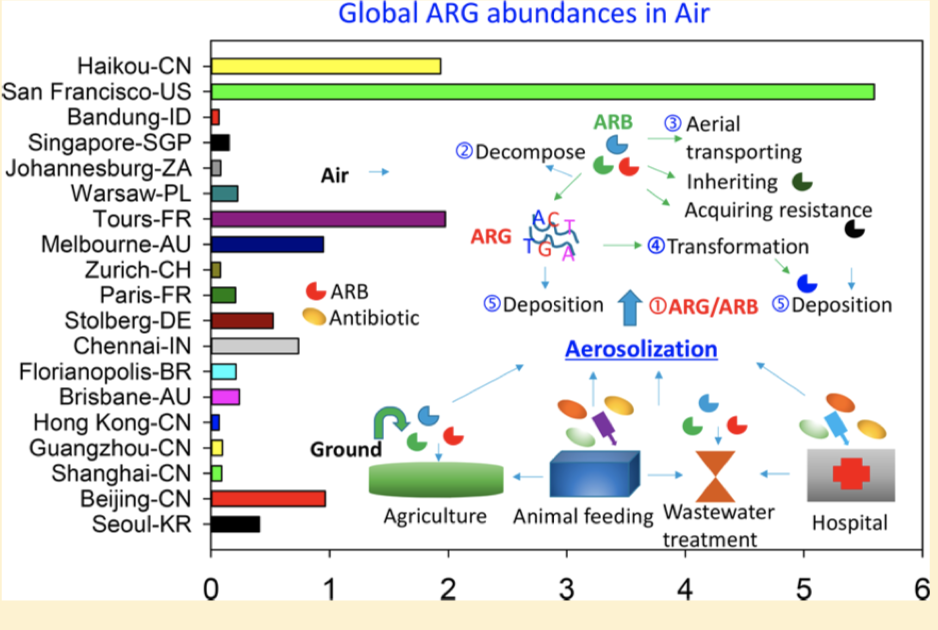This new open access paper from Li et al may be of interest. Global Survey of Antibiotic Resistance Genes in Air.
Abstract:
Despite its emerging significant public health concern, the presence of antibiotic resistance genes (ARGs) in urban air has not received significant attention. Here, we profiled relative abundances (as a fraction, normalized by 16S rRNA gene) of 30 ARG subtypes resistant to seven common classes of antibiotics, which are quinolones, β-lactams, macrolides, tetracyclines, sulfonamides, aminoglycosides, and vancomycins, in ambient total particulate matter (PM) using a novel protocol across 19 world cities. In addition, their longitudinal changes in PM2.5 samples in Xi’an, China as an example were also studied. Geographically, the ARGs were detected to vary by nearly 100-fold in their abundances, for example, from 0.07 (Bandung, Indonesia) to 5.6 (San Francisco, USA). The β-lactam resistance gene blaTEM was found to be most abundant, seconded by quinolone resistance gene qepA; and their corresponding relative abundances have increased by 178% and 26%, respectively, from 2004 to 2014 in Xi’an. Independent of cities, gene network analysis indicates that airborne ARGs were differentially contributed by bacterial taxa. Results here reveal that urban air is being polluted by ARGs, and different cities are challenged with varying health risks associated with airborne ARG exposure. This work highlights the threat of urban airborne transmission of ARGs and the need of redefining our current air quality standards in terms with public health.
It is unclear what the exact implications of these findings are but certainly the presence of such genes and the distribution of such genes across the globe might contribute to the spread of antibiotic resistance and is worth keeping an eye on.

I’m curious about the airborne quality. What inspired the testing of air? Are such bacterial strains normally found in air? In such concentrations? I know that there was a statement in the paper about pollution in cities allowing more airborne particles because it provides more surface area to adhere to. But how do these guys become airborne in the first place?